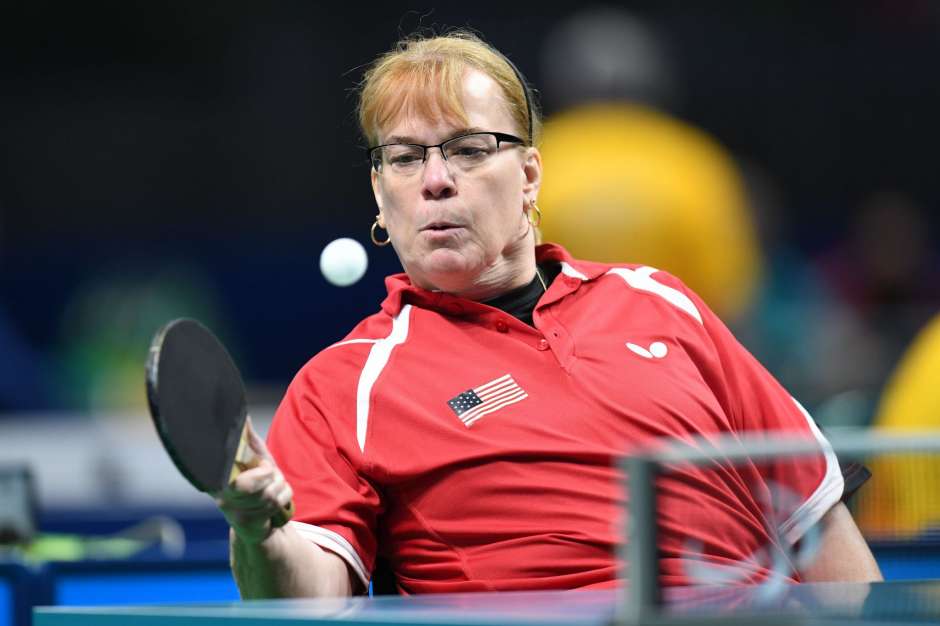To excel in more than one sport is exceedingly difficult. Ask Michael Jordan. (Go ahead. We'll wait.) Although obviously a gifted athlete, considered by many the best to ever play basketball, his foray into minor league baseball was marked by mediocrity. While Jordan's .202 batting average with the Birmingham Barons is negligibly above the dreaded "Mendoza Line," it is actually well below the eponymous Mario Mendoza's career .215 average. And remember, Mendoza played in the majors. Point being, it is almost unheard of for an athlete to compete at the highest level of more than one sport. A generation removed from notable exceptions to the rule such as Bo Jackson and Deion Sanders, who both maintained NFL and MLB careers, it seems more and more that athletes must specialize to survive. Enter Pam Fontaine. The Texas Wesleyan University professor has been defying this one-track mentality since long before Nike told us all the things that "Bo knows." Fontaine was already a multi-sport athlete as a teenager, playing basketball, volleyball and softball. Her life changed forever at the age of 16, when an automobile accident left her paralyzed. The year was 1981. As Fontaine adjusted to life in a wheelchair, her thoughts soon (re)turned to sports. Her first exposure to wheelchair basketball was not encouraging, as she was competing against older, more experienced men. Reluctantly, she tried table tennis as a more accessible alternative. Table tennis, of course, also posed a difficult learning curve. "I went to my first table tennis practice and I (stunk)," recalls Fontaine. "The balls ended up everywhere but on the table.'' With practice, she soon found the target consistently enough to make the US Paralympic team, taking silver at the 1984 London games. Despite this meteoric success, Fontaine still yearned to play basketball. Following her heart, she dedicated herself to the sport until she was once again representing the United States at the Paralympics. As before, her hard work paid off. Fontaine and the USA women's wheelchair basketball team won gold at the 1988 Paralympics, adding a bronze for good measure in 1996. Never one to rest on her laurels, however leafy and numerous, Fontaine was also pursuing her education, starting a family, even founding and coaching the Dallas Lady Mavericks wheelchair basketball team. Despite her Hall of Fame wheelchair basketball career, and her rise to professor at Texas Wesleyan University, Fontaine again dreamt of new fields to conquer. Once again, she was lured back to the sound of the small plastic bouncing ball. When she once again picked up a paddle in 2007, the ball had grown from 38mm to 40mm. The game, in contrast, had shrunk from 21 points to 11. As she adjusted to these new conditions, the then-40-something Fontaine again set her sights on the Paralympics. With her characteristic drive, Fontaine again wore the Stars and Stripes at the Paralympics, not only in 2012 but also at the Rio games in 2016. This summer, Fontaine took one last shot, traveling to Peru to compete in the ParaPan American Games in hopes of securing a ticket to the 2020 Paralympics. Alas, her quest came up short. Accepting that her best playing days are behind her, Fontaine now looks to the future of the sport. "I want to work with youth and young para-players to help develop them because we really don't have many right now," said Fontaine. "Table tennis is wide open." Toward this end, her next play is an event in Houston called Gateway to Gold, where she will be scouting for potential Paralympic talent. Propelled by Pam Fontaine's characteristic relentless drive, there is no doubt that the best days of American Paralympic table tennis lie ahead. Who knows-- maybe she can even teach Michael Jordan how to hit a curveball?
More at The Houston Chronicle
